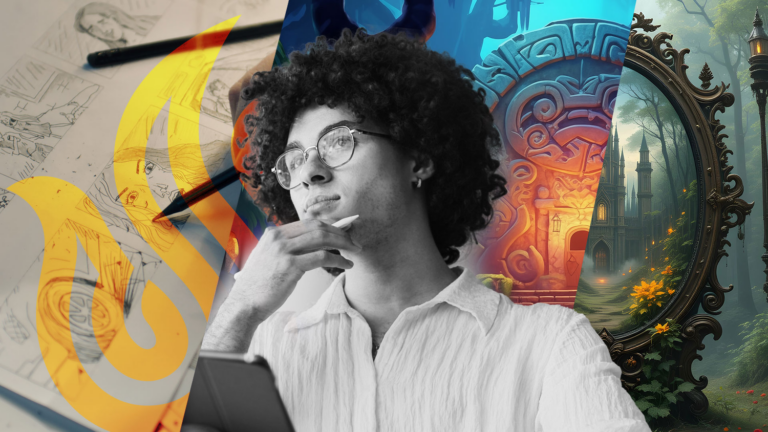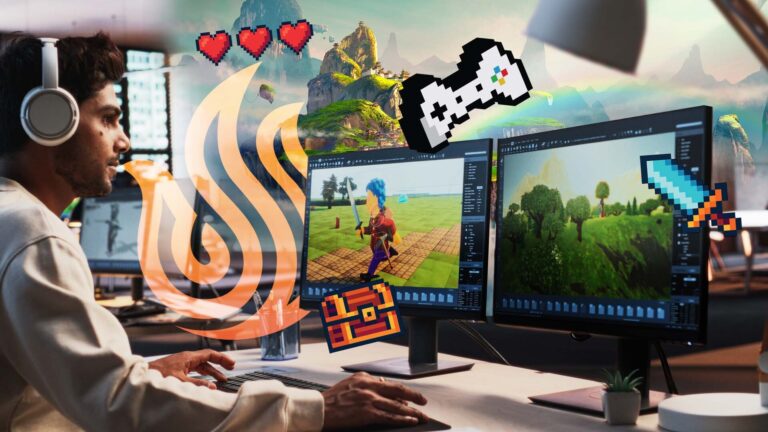Sound design is an art and science that shapes the auditory experience in various mediums, from film and video games to music production and live performances. But what is sound design at its core? In essence, it involves creating, manipulating, and enhancing audio elements to achieve a specific impact or emotion. This field requires a combination of technical skill, creative ingenuity, and a deep understanding of how sound interacts with the human experience. Understanding What is Sound Design: Elements & Practices is key to exploring this dynamic field.
At University of Silicon Valley (USV), sound design is a cornerstone of their Bachelor of Science in Digital Audio Technology program. This academic track offers budding sound designers the knowledge and hands-on experience needed to enter into this dynamic industry. Let’s dive into the key elements and practices that define sound design.
Where Can You Experience Sound Design?
Sound design plays a crucial role in a variety of industries, enriching how we perceive and interact with the world. Here are some key areas where sound design makes a significant impact:
- Film and Television: From the heart-pounding soundtracks of action movies to the subtle ambient noises in dramatic scenes, sound design is essential for storytelling. Imagine the iconic roar of a dinosaur in a blockbuster or the chilling silence that heightens tension in a thriller—all crafted through sound design.
- Video Games: In gaming, sound design goes beyond entertainment. It creates immersive worlds where players can hear the footsteps of approaching enemies or the distant rumble of a storm, adding depth and realism to the virtual experience.
- Theater and Live Performances: In live settings, sound design helps create atmosphere and guide audience emotions. Whether it’s the sound of thunder in a Shakespearean play or the precise audio cues in a Broadway musical, sound enhances the narrative.
- Advertising and Marketing: Sound design isn’t just about art; it’s also a powerful tool in commerce. Memorable jingles, sonic branding, and impactful voiceovers are examples of how sound can influence consumer behavior.
Sound design offers a unique way to tell stories and evoke emotions across different platforms. Whether you’re designing the eerie ambiance of a haunted house in a video game or creating the uplifting score for a heartwarming film, sound design empowers creators to leave a lasting impact on their audience. By immersing yourself in this field, you’ll not only develop technical skills but also the creative mindset needed to innovate in the ever-expanding world of audio technology.
Core Elements of Sound Design
Sound design is multifaceted, involving various components that work together to create compelling auditory experiences. Here are the primary elements:
Audio Recording
Sound design begins with recording. High-quality audio capture lays the foundation for all subsequent processes. This includes field recordings, studio sessions, and even voiceovers. The ability to properly mic and record sounds is a skill emphasized in USV’s Bachelor of Science in Digital Audio Technology program.
Sound Editing
Editing involves shaping and refining raw audio to fit the needs of the project. It can include trimming, equalizing, and enhancing specific frequencies to ensure clarity and impact.
Sound Effects (SFX)
Sound effects bring scenes to life. From the roaring engines in a racing game to the subtle rustling of leaves in a movie, SFX play a vital role in immersing audiences. The Bachelor of Science in Digital Audio Technology program at USV focuses on teaching students to create custom sound effects using both traditional techniques and digital tools.
Music Composition
In many cases, sound design overlaps with music composition. A well-crafted score complements the visuals and enhances emotional resonance.
Mixing and Mastering
Mixing involves balancing all audio elements, while mastering ensures the final product sounds polished and professional. These technical processes are essential for creating a cohesive auditory experience.
Practices of Sound Design
Sound designers utilize a range of practices and tools to bring their ideas to life. Here’s an overview of the most common methodologies:
Field Recording
Field recording captures natural sounds from the environment, such as ocean waves, cityscapes, or wildlife. These recordings serve as the building blocks for realistic soundscapes.
Foley Artistry
Foley artists recreate everyday sounds in a controlled studio environment. Footsteps, door creaks, and even the swishing of clothing can be meticulously recorded to sync perfectly with visuals.
Digital Sound Synthesis
Synthesizers allow sound designers to craft unique, otherworldly audio elements. This technique is particularly popular in science fiction films and electronic music production.
Layering
Layering involves stacking multiple sounds to create depth and complexity. For example, the sound of a dragon’s roar might combine animal growls, thunder claps, and human vocalizations.
Automation
Automation allows sound designers to dynamically alter audio properties like volume, panning, and effects over time. This adds motion and evolution to static sounds.
Future Trends in Sound Design
As technology evolves, so does sound design. Here are some emerging trends to watch:
- Virtual Reality (VR) Audio: Creating 360-degree soundscapes for immersive VR experiences.
- AI-Powered Tools: Automating repetitive tasks like noise reduction and audio restoration.
- Spatial Audio: Enhancing realism in gaming and AR applications with 3D sound positioning.
- Sustainability in Sound Design: Reducing the environmental impact of recording and production practices.
Career Opportunities in Sound Design
Sound design offers diverse career paths. Here are some roles graduates might pursue:
- Audio Engineer: Focuses on recording, mixing, and mastering audio for various projects.
- Game Audio Designer: Creates immersive soundscapes for video games.
- Film and TV Sound Designer: Enhances visual storytelling with impactful audio.
- Music Producer: Oversees the creative and technical aspects of music production.
- Live Sound Technician: Manages audio for concerts, theater, and live events.
Why Study Sound Design at USV?
University of Silicon Valley offers quality audio education. Through its specialized programs, students gain access to industry-like facilities and experienced instructors who are industry professionals. Here’s a closer look at what makes USV’s offerings great for audio enthusiasts:
Hands-On Learning
USV emphasizes practical experience. Students work on real-world projects, such as recording sessions, sound design for games, and audio post-production for films.
Industry-Standard Technology
The Bachelor of Science in Digital Audio Technology program introduces students to industry-standard software and hardware, preparing them for professional environments.
Career Skills
The Bachelor of Science in Digital Audio Technology focuses on developing core competencies, helping graduates develop the tools for roles in audio engineering, music production, and sound design.
Networking Opportunities
Located in the heart of Silicon Valley in San Jose, USV provides students with great networking opportunities in the tech, entertainment, and gaming industries.
Start Your Sound Design Journey
Understanding What is Sound Design: Elements & Practices is key to exploring this ever-evolving field that combines artistry with technical skills. If you’re inspired to create impactful auditory experiences, consider pursuing a degree at University of Silicon Valley. Our Bachelor of Science in Digital Audio Technology program provides the foundations for building a career in sound design.


